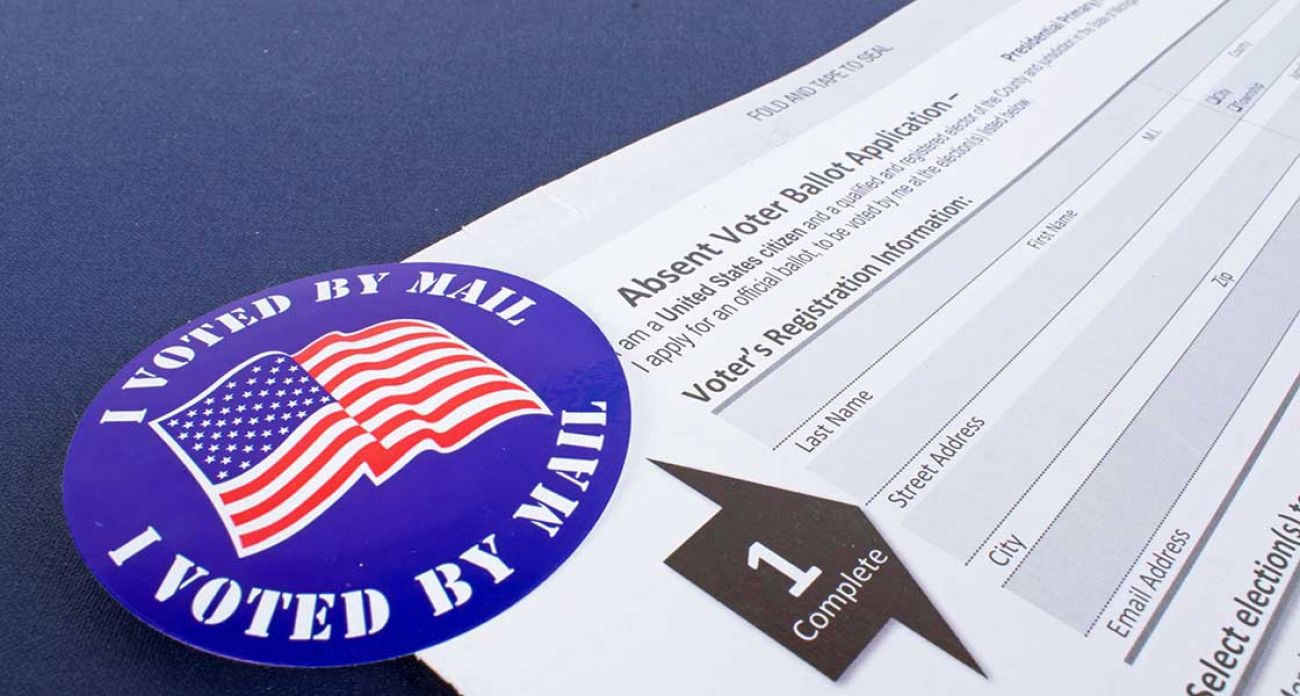Absentee ballots favor Democrats in Michigan, causing worry among GOP

In a historic primary election Tuesday, Democrats were far more likely than Republicans to cast absentee ballots — and that could spell trouble for the GOP in the fall.
While statewide numbers likely won’t be available until week’s end, a review of races in Oakland, Macomb and Kent counties by Bridge found that absentee votes accounted for 75 percent to 80 percent of Democratic ballots compared to 55 percent for Republican ones.
That’s among 1.6 million absentee ballots, more than 300,000 more than had ever been cast in a Michigan election, 25 percent above the previous high, the 2016 presidential election.
- Michigan primary results: Rashida Tlaib cruises, Peter Meijer wins big
- President Trump worries about voter fraud. Here’s the reality in Michigan.
- Whitmer tightens Michigan’s mask order but makes it optional when voting
Republicans traditionally have embraced absentee voting and consultants in both parties blame some of Tuesday’s discrepancy on President Donald Trump’s repeated attacks on the safety of the practice.
“The Republicans have really managed to screw themselves,” said Mark Grebner, a Democratic consultant who watched “waves” of Democratic absentee ballots flow into election clerk offices, far more than Republican ones.
“They’re campaigning against mail-in voting, and the only people listening to them are Republicans.”
Michigan Secretary of State Jocelyn Benson is predicting absentee voting will hit record levels in November, perhaps as many as 3 million, more than double the 1.3 million cast by absentee voters in 2016.
The surge comes as many voters are reluctant to visit polling places amid the coronavirus pandemic and follows a voter-approved constitutional amendment in 2018 that allows for no-reason absentee voting.
Benson also made absentee voting easier this year by mailing applications to 7.7 million registered voters.
Republicans traditionally have resisted efforts to expand voting, with some thinking that doing so benefits Democrats and others expressing fraud fears.
For weeks, Trump has tweeted about what he says are the dangers of mail-in voting, and even Republicans acknowledge that has had an impact.
“President Trump has brought up the issue,” said Stu Sandler, a Republican consultant who once worked for Michigan Attorney General Mike Cox, “and I think it’s made Republicans more wary than Democrats from using absentee voting.”
Consider: In 2018, State Sen. Peter Lucido, a Macomb County Republican, got 34 percent of the vote total from absentee ballots, while his Democratic opponent received 31 percent.
But on Tuesday, in the primary to become Macomb County prosecutor, Lucido advanced to the general election with 53 percent of his votes from absentee ballots — compared to 79 percent of ballots on the Democratic side, which was won by retired judge Mary Chrzanowski.
The same phenomenon played out in Kent and Oakland counties.
In west Michigan’s Kent County, which leans Republican, U.S. Sen. Gary Peters, a Democrat, got 74 percent of his votes from absentee voters. His November opponent, Republican John James, got 54 percent of his votes from absentee voters.
In Oakland County, a suburban county north of Detroit that has backed both Democrats and Republicans, 72 percent of Democrats voted absentee in the county executive primary won by David Coulter. On the Republican side, won by former state Sen. Mike Kowall, 55 percent of votes were absentee.
Given the new reality, partially created by the COVID-19 pandemic but also Michigan’s expanded voting rights, Republican candidates will have to adjust to the rise in absentee voting or they’ll be at a disadvantage, said John Sellek, CEO of Harbor Strategies of Lansing who has worked for Republican office holders and has consulted campaigns.
With absentee voting skyrocketing, Republican candidates will have to “massively adjust their resources to that fact,” Sellek said. “They know they have to pick things up.”
Michigan Republicans have long supported absentee voting, encouraging older voters to cast early ballots, Sandler, the consultant, said.
But some voters remain cautious about casting ballots by mail or dropping them off with election clerks, Sandler said. He said the discrepancy between absentee and traditional voting won’t matter if Republicans show up to polls in big numbers.
“We need more Republicans to vote securely whether by mail or in person,” he said.
One reality of a surge in absentee voting, whether driven by pandemic fears or the new ability for all voters to do so, is it will compress the election campaign season.
Because absentee ballots are sent out six weeks before an election, which would be mid-September, candidates have to make their pitch long before Nov. 3 if they want to reach all voters.
“You’ve got to have a 60-day conversation now,” said pollster Richard Czuba.
“You can’t wait, if you’re running for the state Legislature, for the last three weeks. You have to start talking to them earlier.”
Sellek said that will be expensive: Get-out-the vote campaigns targeted at absentee voters typically involved sending direct mail to 25 percent of voters. Now they’ll have to hit 50 percent or more.
See what new members are saying about why they donated to Bridge Michigan:
- “In order for this information to be accurate and unbiased it must be underwritten by its readers, not by special interests.” - Larry S.
- “Not many other media sources report on the topics Bridge does.” - Susan B.
- “Your journalism is outstanding and rare these days.” - Mark S.
If you want to ensure the future of nonpartisan, nonprofit Michigan journalism, please become a member today. You, too, will be asked why you donated and maybe we'll feature your quote next time!




